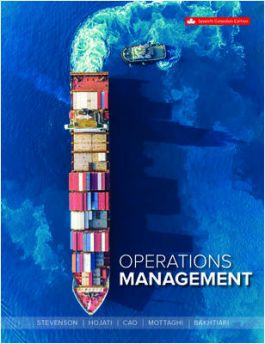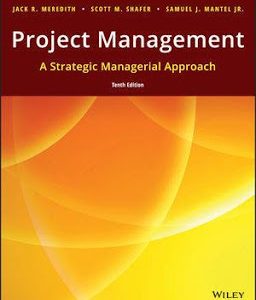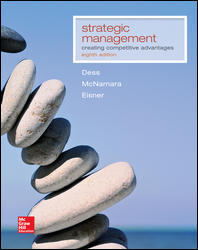No products in the cart.
Management
 Loading...
Loading...
Operations Management 7th Canadian Edition By William J Stevenson, Hydeh Mottaghi, Behrouz Bakhtiari 2021 Solution Manual
Operations Management 7th Canadian Edition By William J Stevenson, Hydeh Mottaghi, Behrouz Bakhtiari 2021 Solution Manual
Operations Management
( Solution Manual)
Operations Management 7th Canadian Edition By William J Stevenson, Hydeh Mottaghi, Behrouz Bakhtiari 2021 Solution Manual
Edition: 7th Canadian
Author Name: William J Stevenson, Hydeh Mottaghi, Behrouz Bakhtiari
contact:
Whatsapp +1 (949) 734-4773
for the Facebook page click here
for more books for ( Test Bank and Solution Manual) click here
sample free
 Loading...
Loading...
$49.00 $100.00
Operations Management 7th Canadian Edition By William J Stevenson, Hydeh Mottaghi, Behrouz Bakhtiari 2021 Solution Manual
Operations Management
( Solution Manual)
Operations Management 7th Canadian Edition By William J Stevenson, Hydeh Mottaghi, Behrouz Bakhtiari 2021 Solution Manual
Edition: 7th Canadian
Author Name: William J Stevenson, Hydeh Mottaghi, Behrouz Bakhtiari
contact:
Whatsapp +1 (949) 734-4773
for the Facebook page click here
for more books for ( Test Bank and Solution Manual) click here
sample free
CHAPTER 1
INTRODUCTION TO Operations Management
Teaching Notes
The initial meeting with the class (the first chapter) is primarily to overview the course (and textbook), and to introduce the instructor and his/her interest in Operations Management (OM). The course outline (syllabus), the objectives of the course and topics, chapters, and pages of text covered in the course, as well as problems/mini-cases to be done in class, videos to watch, Excel worksheets to use, etc. are announced to the class.
Many students may know little about OM and the types of jobs available. This point can be addressed in order to generate enthusiasm for the course. The Learning Objectives at the beginning of the chapter indicate the highlights of the chapter.
Answers to Discussion and Review Questions
- Operations management is the management of processes (i.e., the sequence of activities and resources) that create goods and/or provide services.
- Production/operations planner/scheduler/controller, demand planner (forecaster), quality specialist, logistics coordinator, purchasing agent/buyer, supply chain manager, materials planner, inventory clerk/manager, production/operations manager.
- a. Because a large % of a company’s expenses occur in operations, e.g., purchasing materials and workforce salaries, more efficient operations can result in large increases in profits.
- A number of management jobs are in OM.
- Activities in all other areas of any organization are all interrelated with OM.
- Operations innovations lead to marketplace and strategic benefits.
- The three major functions of organizations are operations, finance, and marketing. Operations is concerned with the creation of goods and services identified by marketing, finance is concerned with provision of funds necessary for operations and investment of extra funds, and marketing is concerned with promoting and/or selling goods or services.
- The operations function consists of all activities that are directly related to producing goods or providing services. It adds value during the transformation process (the difference between the cost of inputs and price of outputs). An operations manager manages the transformation function. He/she is responsible for planning and using the resources (labour, machines, and materials). The kind of work that operations managers do varies from organization to organization (largely because of the different goods or services involved). For example, a store/restaurant manager is in effect an operations manager. See Table 1-4 for examples of typical activities performed by operations managers.
- Design decisions are usually strategic and long term (1–5 years or so ahead), whereas planning and control decisions are shorter term. In particular, planning decisions are tactical and medium term (1–12 months or so ahead), and control decisions (including scheduling and execution) are short term (1–12 weeks or so ahead). Design involves decisions that relate to goods and service design, capacity, acquisition of equipment, arrangement of departments, and location of facilities. Planning/control activities involve management of personnel, quality control/assurance, inventory planning and control, production planning, and scheduling.
- Important differences between producing goods and performing services are:
(1) Customer contact, use of inventories, and demand variability
(2) Uniformity of input
(3) Labour content of jobs
(4) Uniformity of output
- Measurement of productivity
- Quality Assurance
- Answers might vary for each student. Examples include Teaching, personal services such as haircut, lawn mowing, maid service, and car wash. The customer or something belonging to the customer is being transformed.
- dealing with labour difficulties, solving personnel problems, solving management problems, solving technical problems
- making OM decisions, including general management decisions (planning, organizing, controlling, and directing)
- innovating, personal initiatives, improving productivity
- representing operations in upper management
- a. The Industrial Revolution began in the 1770s in England and spread to the rest of Europe and North America in the late eighteenth century and the early nineteenth century. A number of inventions such as the steam engine, the spinning jenny, and the power loom helped to bring about this change. Later machines made of iron were built. Two concepts assisted in large-scale production: division of labour and interchangeable parts. Despite the major changes that were taking place, management theory and practice had not progressed much from early days. What was needed was a systematic approach to management.
- Frederick W. Taylor spearheaded the scientific management more than a century ago. The science of management movement was based on observation, measurement, analysis, improvement of work methods, and economic incentives. He also published a book titled The Principles of Scientific Management in 1911. Other pioneers who contributed to scientific management include Frank Gilbreth, often referred to as the father of time and motion study, and his wife Lillian Gilbreth, and Henry Gantt.
- An interchangeable part is a part made to such precision that all units of the part would fit any particular product it is made for. It meant that individual parts would not have to be custom-made (they were standardized). The standardized parts could also be used as replacement parts. The result was a tremendous decrease in assembly time and cost.
- Division of labour is breaking up a production process into a series of tasks, each performed by a different worker. It enabled a worker to learn the job and become proficient at it more quickly, and avoid the delays of having a single worker shifting from one activity to another.
- a. The service sector accounts for more than 79 percent of jobs in Canada and this continues to increase. Some examples include government services, finance and insurance, healthcare, education, professional and technical services.
- Manufacturing is important because it produces the goods that we use, and many service jobs are dependent on manufacturing because they support manufacturing. Manufacturing produces food and beverage, textile and clothing, petroleum, chemicals, machinery, computer and electronic products, electrical equipment, and transportation equipment.
- A model is an abstraction of reality, a simplified representation of something. Models can be mathematical, schematic, or statistical. Models ignore the unimportant details so that attention can be concentrated on the most important aspects, thus increasing the opportunity to understand a problem and its solution. Models allow experiments that could be very costly to do in real life.
- From Table 1-6: e.g., Frederick W. Taylor, Frank Gilbreth, Henry Gantt, Henry Ford, F.W. Harris, W. Shewhart, W. Edwards Deming, Joseph Orlicky, and Taiichi Ohno.
- Answers might vary for each student.
- Pros (for owning a car): convenience, flexibility
Cons (for owning a car): costs (initial, insurance, maintenance & repairs, gas), parking
- Pros (for buying now): availability
Cons (for buying now): technology change, reduced cost in future
- Pros (for new car): reliability, warrantee
Cons (for new car): more expensive, higher insurance, higher depreciation
- Pros (for speaking up in class): develop favourable image with instructor, feel more confident
Cons (for speaking up in class): risk of being wrong, appearance of showing off
- Craft production: involves skilled workers producing high variety of customized goods at low quantity, utilizing general-purpose equipment. The main advantage is the flexibility to produce a wide variety of goods providing many choices to customers. The main disadvantage is its inability to produce at low cost. Examples: custom tailor, machine shop, print shop, and landscaping.
Mass production: involves low-skilled workers producing a few standardized goods at high quantity, utilizing specialized equipment. The main advantage is low cost efficient production. The main disadvantage is that it does not allow easy changes in quantity of output, the product, or the process. Examples: paper, sugar or salt or crude oil refining, and soft drink-bottling.
Lean production (or just-in-time): involves highly skilled workers producing a high variety of goods at high quantity, using flexible equipment. It requires high level of employee involvement and teamwork. It combines the advantages of both mass production (high quantity, low cost) and craft production (variety, flexibility). Examples: automobiles, computers, and appliances.
16. Compared to workers in mass production, much more is expected of workers in lean pro







There are no reviews yet.